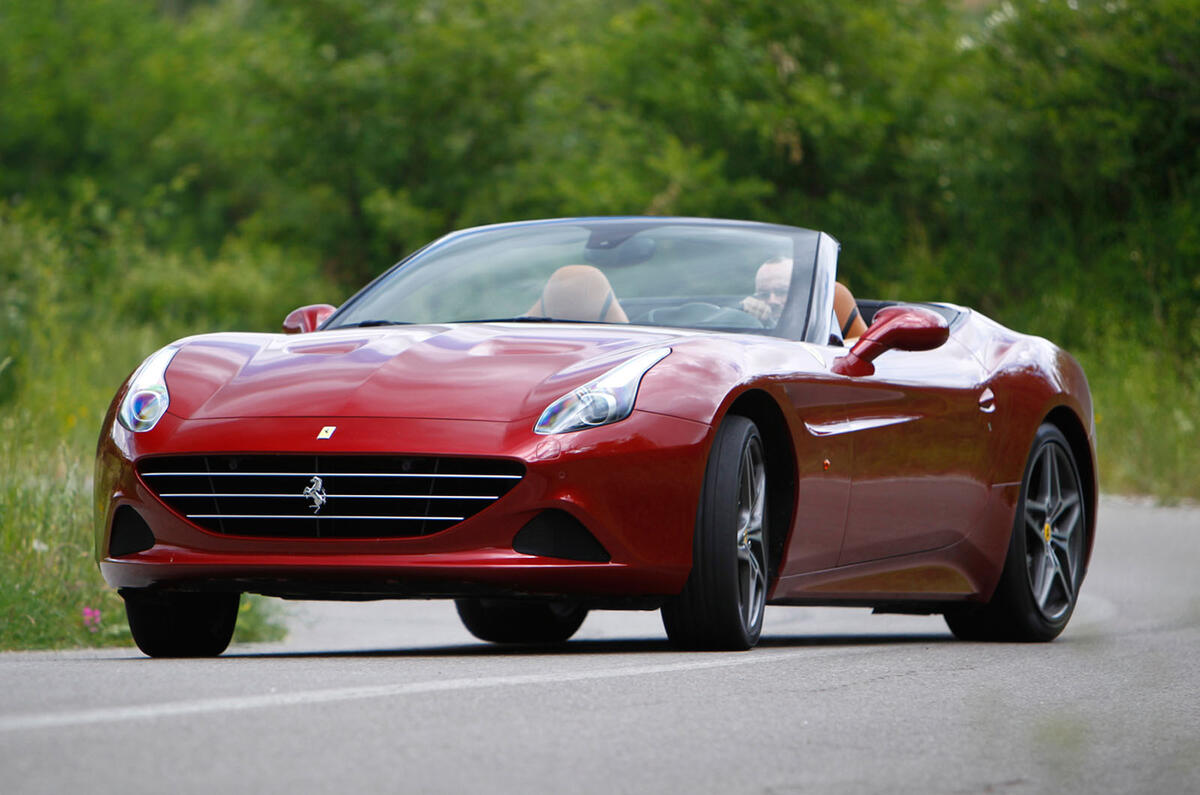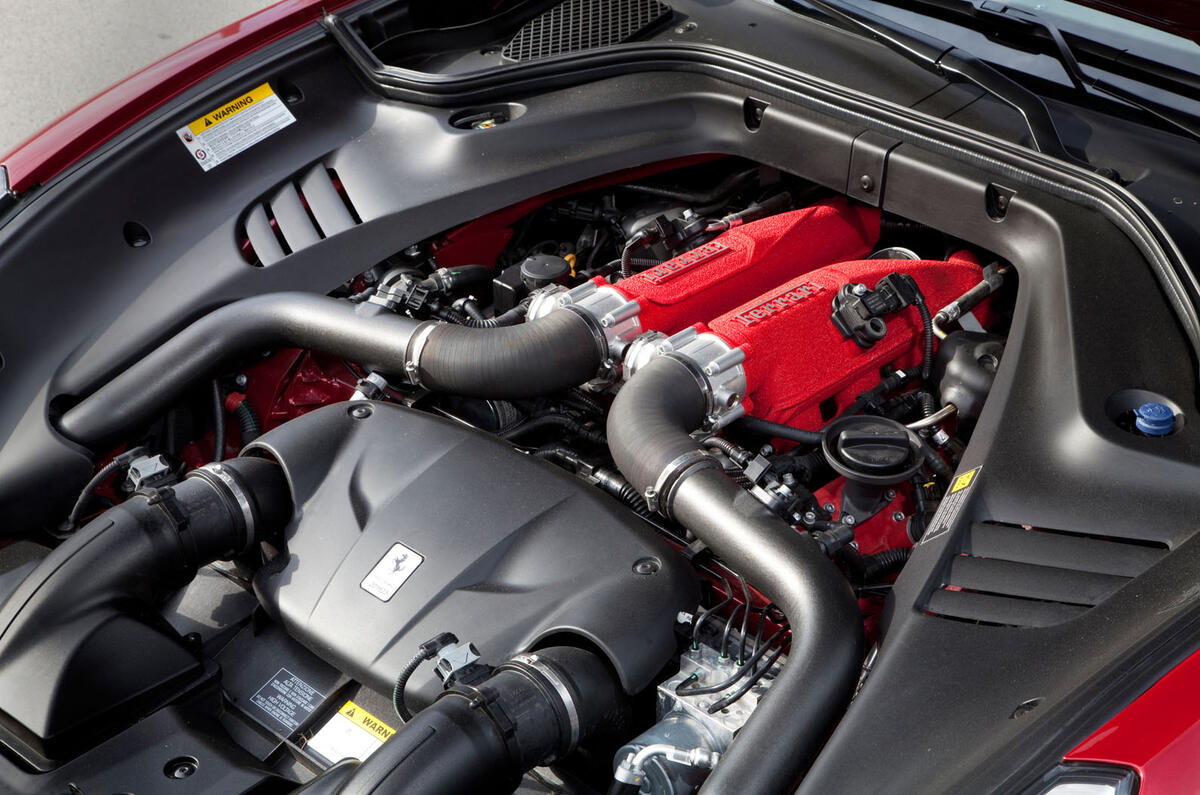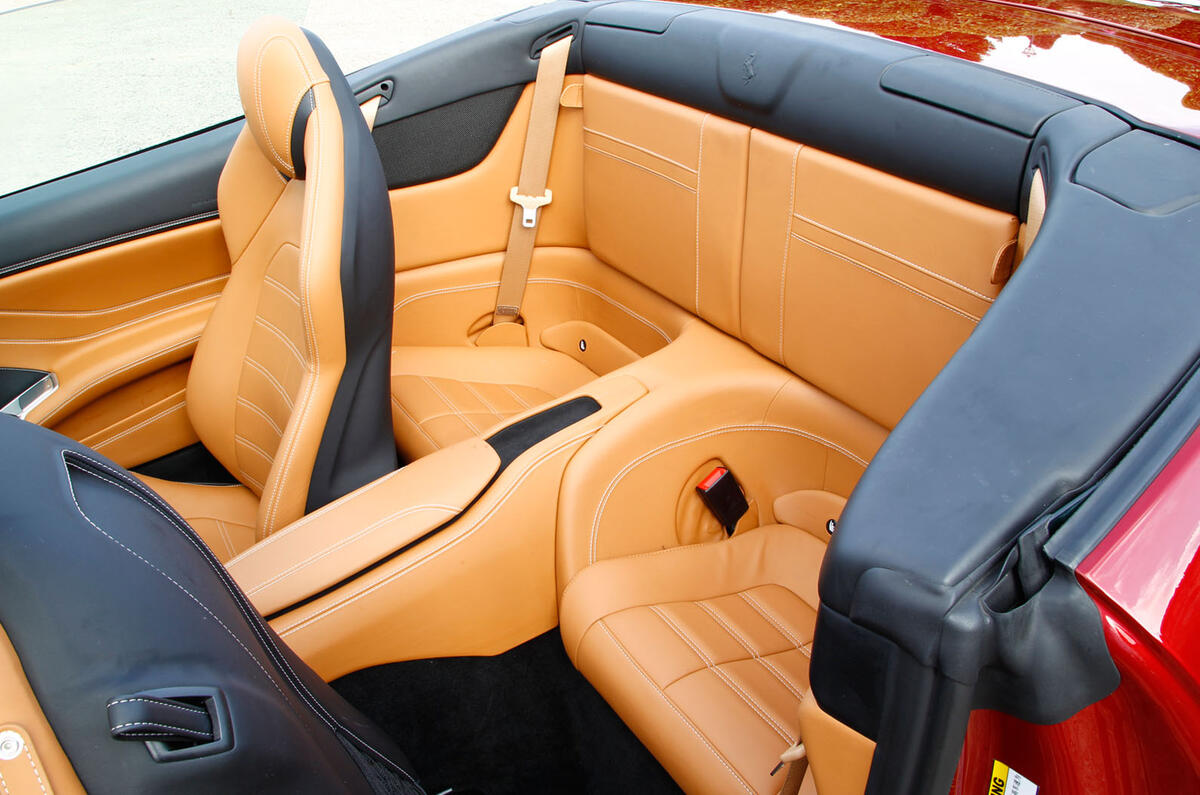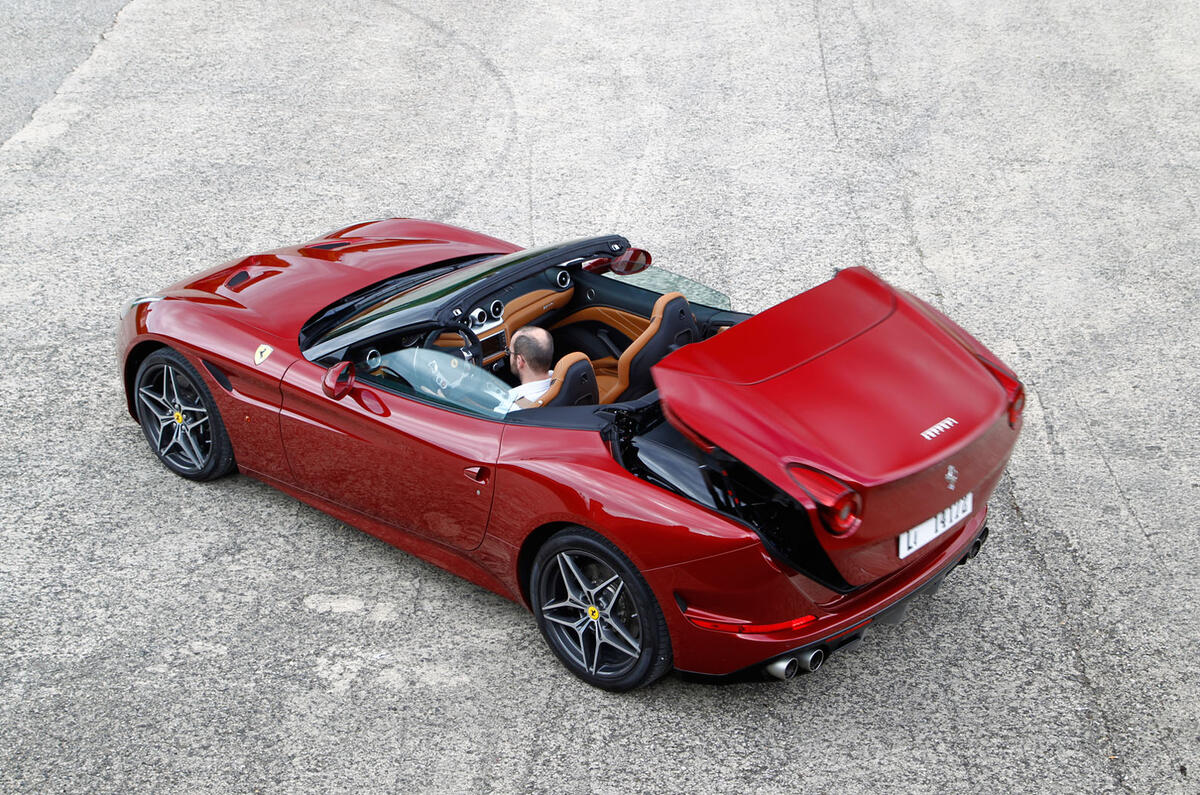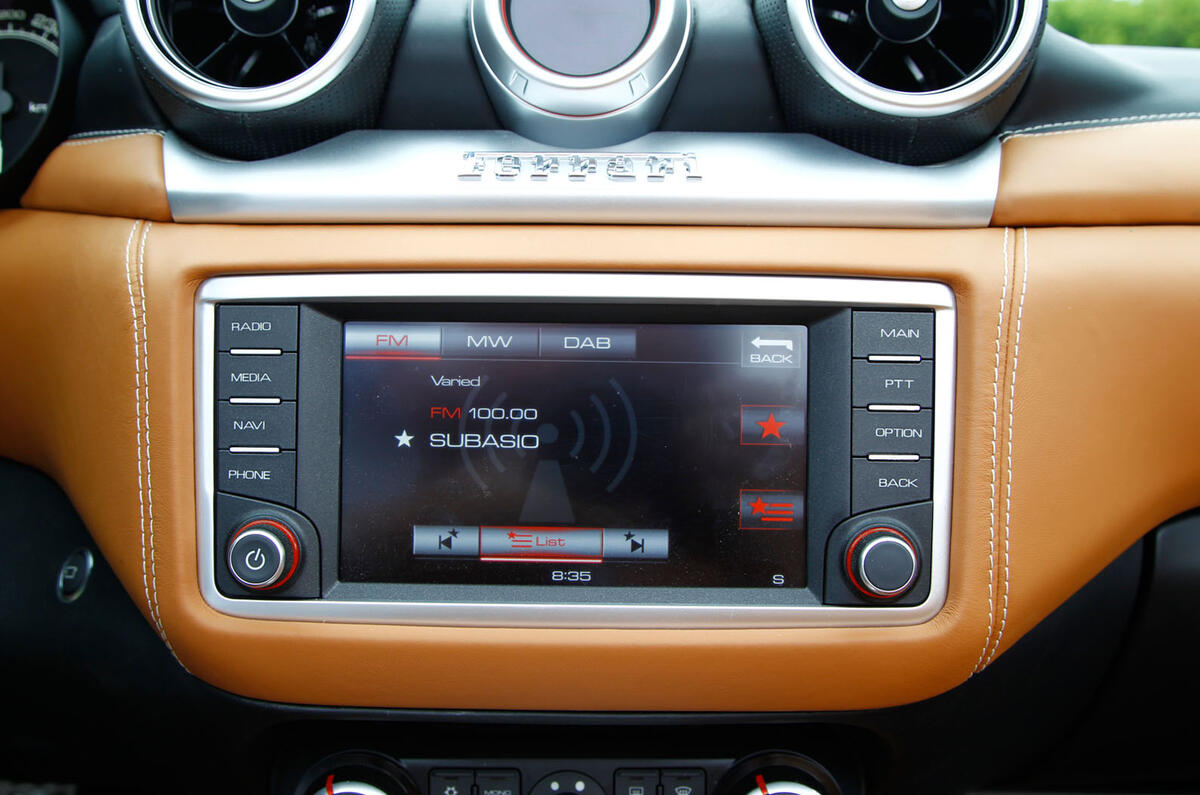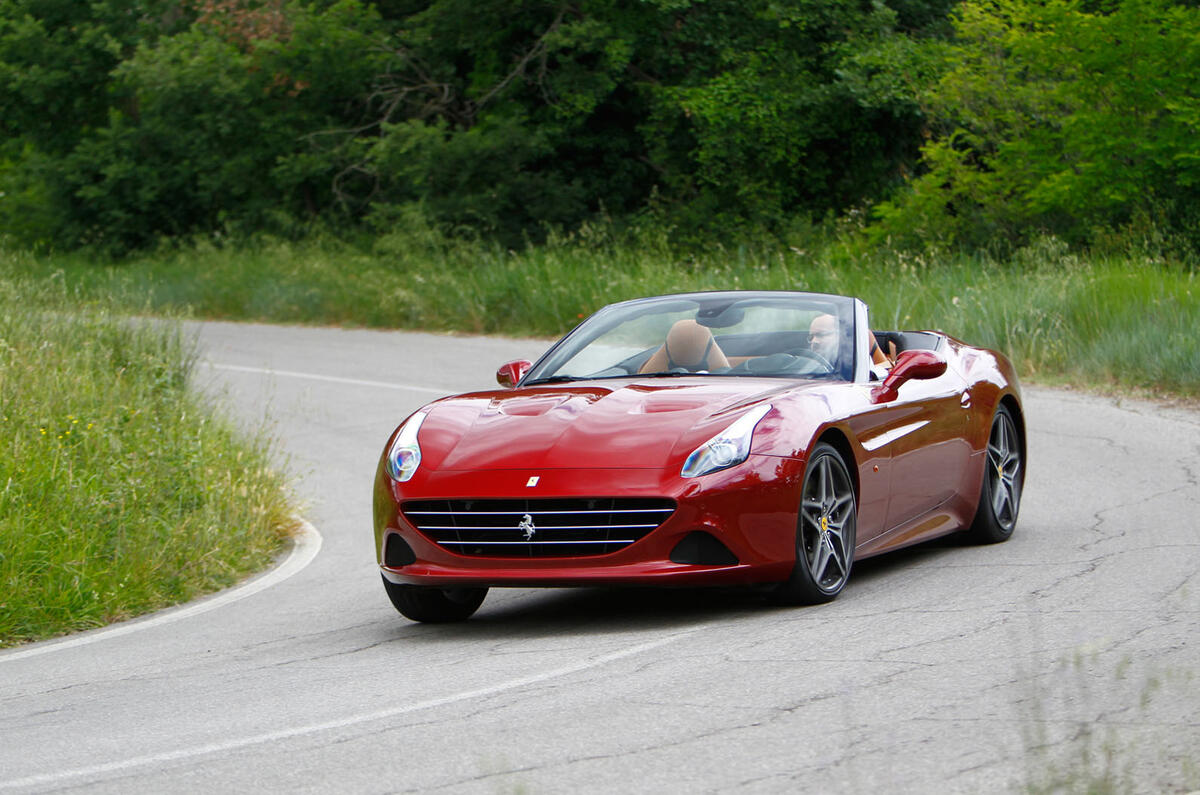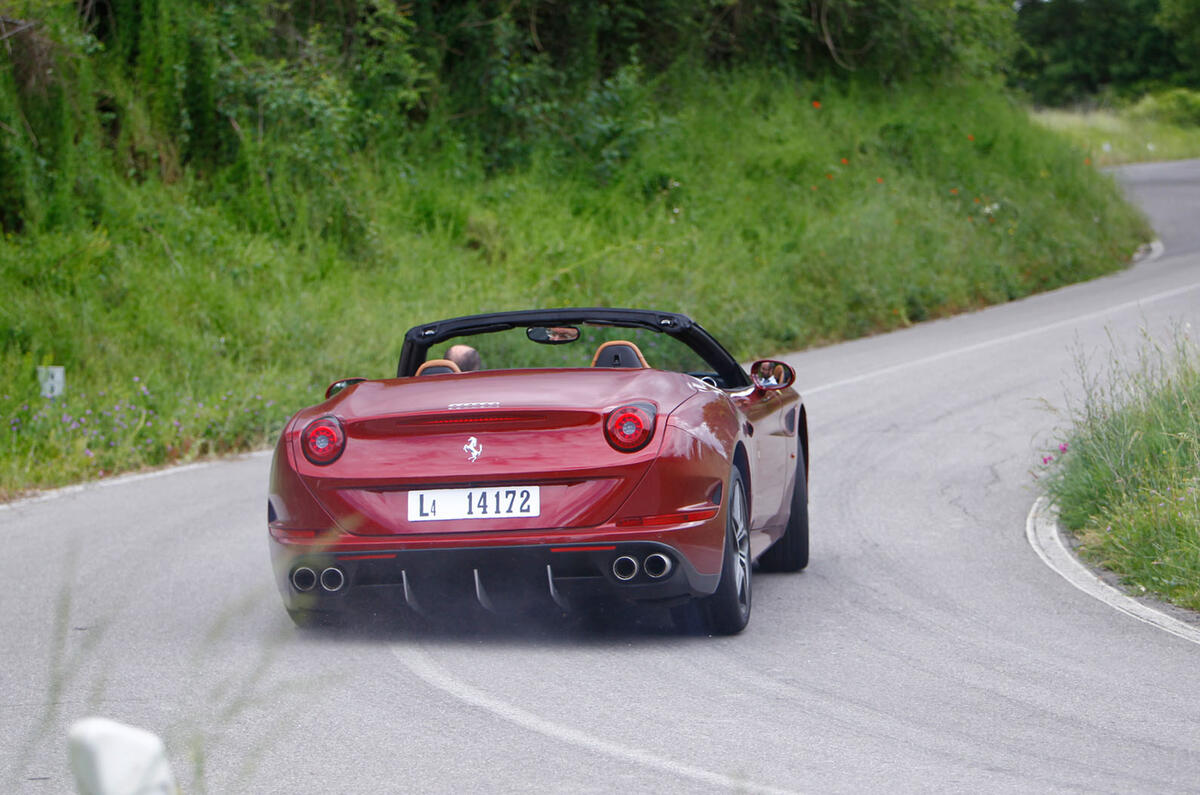This is the new and improved version of the Ferrari’s folding hard-top grand tourer: the California T.
The new model is a sizeable facelift of the six-year old California, with an additional T on the badge referencing the most significant change to the car: the adoption of a twin-turbocharged engine.
The new engine is a 3.9-litre (well, 3.85-litre, or 3855cc if you want to be really picky) unit instead of the old 4.3, but the fitment of two, twin-scroll turbos mean power is up by 70bhp to 552bhp.
Extra poke isn’t the primary reason for the forced induction, though. Instead it’s to improve efficiency, because even Ferrari isn’t immune from such trends. In place of the 299g/km CO2 output of the old model, the California T emits 250g/km and returns 26.9mpg. That’s marginally better than a Vauxhall Insignia VXR. While making 552bhp and, at times, 557lb ft.
At times? Yes. Only when seventh gear is engaged on the twin-clutch transmission (which has longer overall ratios than before), does the engine make its full complement of torque. And it’s not because the driveline (which owes more to 12-cylinder Ferraris than the early California) can’t hack the torque.
No. It’s because the company’s engineers are as concerned about the character of a turbocharged Ferrari as you or I might be. Ferraris are meant to rev stratospherically. They’re meant to get faster as they move up the rev-range. They’re meant to sing. They’re meant to feel naturally aspirated.


